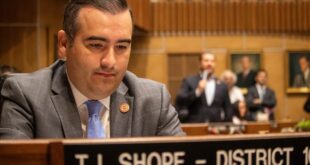The hearings for President Joe Biden‘s Cabinet nominations continue today.
We will hear testimony from his picks to lead all of his cabinet positions over the next several weeks. We will profile the nominees in advance of their hearings so our readers will have some background information as the proceedings take place.
In addition, most of the hearings will be live-streamed, and we will share that information on our Twitter feed once the hearings go live.
Merrick Garland
Attorney General
- Currently serves on the United States Court of Appeals for the District of Columbia, where he was Chief Judge for seven years
- Veteran of the Department of Justice and served as Deputy Assistant Attorney General for the Criminal Division and Principal Associate Deputy Attorney General
Merrick Garland is the chief judge of the most important federal appeals court in the nation. In this role, he has consistently forged consensus among judges across the ideological spectrum, and he is uniquely poised to serve immediately as a Supreme Court justice.
Born and raised in Illinois by a mother who served as a community volunteer and a father who ran a small business out of the family home, Garland was valedictorian of his public high school class. He won scholarships to attend Harvard University, where he graduated summa cum laude, and Harvard Law School, where he received his law degree magna cum laude and served on the Harvard Law Review.
While in college, Garland worked a summer job as a shoe store stock clerk and sold his comic book collection to help pay his tuition. As a law student, he earned room and board by counseling undergraduates.
After law school, Garland clerked for legendary Second Circuit Judge Henry Friendly. Garland then clerked for Supreme Court Justice William Brennan. Garland became a partner at a prominent law firm in just four years, with a practice focusing on litigation and pro bono representation of disadvantaged Americans.
In 1989, shortly after becoming a partner, he returned to public service by accepting a job as a federal prosecutor during the George H.W. Bush Administration, investigating and trying cases involving public corruption, drug trafficking, and fraud.
He later joined the Department of Justice, first as Deputy Assistant Attorney General for the Criminal Division and then as Principal Associate Deputy Attorney General. In these roles, he oversaw some of the Department’s most significant prosecutions in the 1990s, including coordinating the government’s response to the Oklahoma City bombing.
Garland moved to Oklahoma in the days following that terrorist attack, and led the investigation and prosecution that ultimately brought Timothy McVeigh to justice. He also supervised the Department’s responses to the Unabomber and the Montana Freemen.
When Garland was nominated to the D.C. Circuit, Garland received overwhelming bipartisan praise from Senators, lawyers, and commentators, and was confirmed by a vote of 76-23 in 1997. In his 19 years on the D.C. Circuit, Garland has a track record of building consensus as a thoughtful, fair-minded judge who follows the law.
In his confirmation process, Chief Justice Roberts noted, “Any time Judge Garland disagrees, you know you’re in a difficult area.” Senator Orrin Hatch, the chairman of the Senate Judiciary Committee at the time of Garland’s confirmation, has said Garland would be a “consensus nominee” for the Supreme Court who “would be very well supported by all sides.”
Garland became Chief Judge in 2013.
 Poli Alert Political & Civics
Poli Alert Political & Civics



